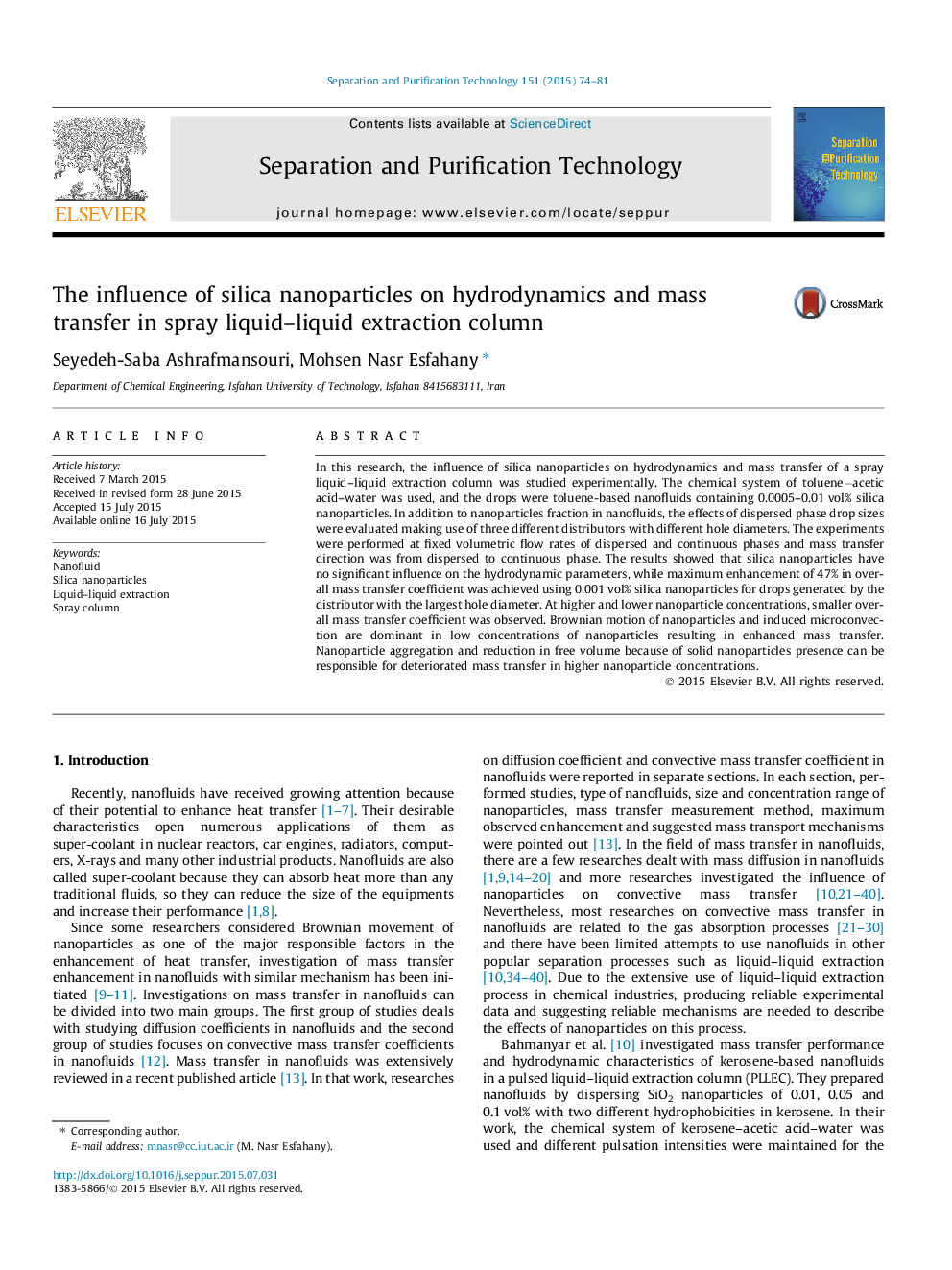| Article ID | Journal | Published Year | Pages | File Type |
|---|---|---|---|---|
| 640410 | Separation and Purification Technology | 2015 | 8 Pages |
•Nanoparticles show no significant influence on the hydrodynamic parameters.•Maximum enhancement of 47% was achieved in overall mass transfer coefficient.•Maximum enhancement of 26% was achieved in extraction efficiency.•Silica nanoparticles showed more influence for larger drops.
In this research, the influence of silica nanoparticles on hydrodynamics and mass transfer of a spray liquid–liquid extraction column was studied experimentally. The chemical system of toluene−acetic acid–water was used, and the drops were toluene-based nanofluids containing 0.0005–0.01 vol% silica nanoparticles. In addition to nanoparticles fraction in nanofluids, the effects of dispersed phase drop sizes were evaluated making use of three different distributors with different hole diameters. The experiments were performed at fixed volumetric flow rates of dispersed and continuous phases and mass transfer direction was from dispersed to continuous phase. The results showed that silica nanoparticles have no significant influence on the hydrodynamic parameters, while maximum enhancement of 47% in overall mass transfer coefficient was achieved using 0.001 vol% silica nanoparticles for drops generated by the distributor with the largest hole diameter. At higher and lower nanoparticle concentrations, smaller overall mass transfer coefficient was observed. Brownian motion of nanoparticles and induced microconvection are dominant in low concentrations of nanoparticles resulting in enhanced mass transfer. Nanoparticle aggregation and reduction in free volume because of solid nanoparticles presence can be responsible for deteriorated mass transfer in higher nanoparticle concentrations.
